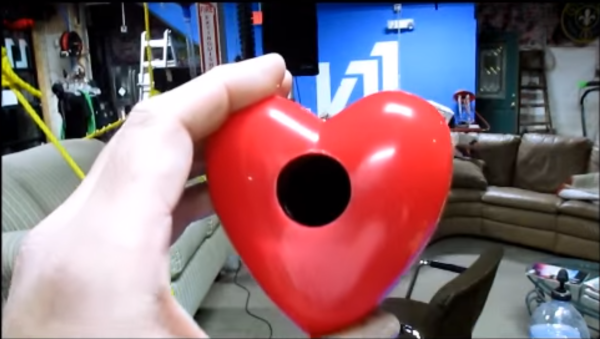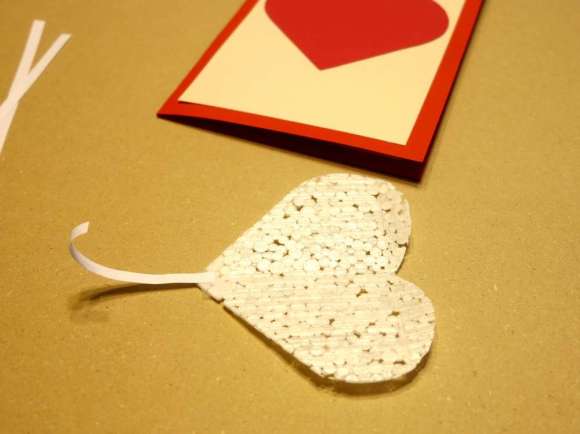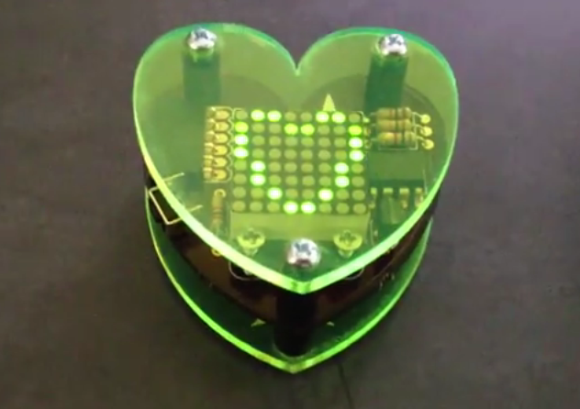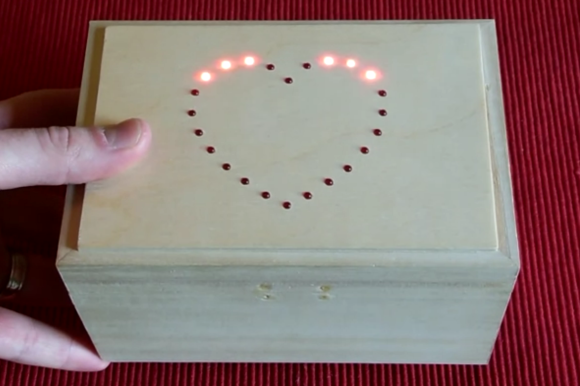Just in time for Valentine’s Day, here’s a project out of the LVL1 hackerspace in Louisville that should warm the heart of that special someone in your life. Behold the Magic 8 of Hearts.
The metaphors are somewhat mixed here, what with the heart-shaped box, the mysterious black window of a Magic 8-ball, and the cheesy once-a-year sayings like those printed on Sweethearts candies. [JAC_101] began surgery by punching a hole in the plastic heart for an OLED display. The white on black display evokes the Magic 8-Ball look, although adding a blue filter would have nailed it. A 3-axis accelerometer detects shaking motion and an Arduino Nano selects a message to display. Some white LEDs light up the enclosure and add a little pizzazz. As a bonus, the whole thing is inductively charged – no extra holes needed in this heart.
If your true love would appreciate something a little flashier, try this animated LED Valentine heart. And if you’re successful in your romantic endeavors, you might just find yourself building these ultra-geeky wedding invitations.
Continue reading “Magic 8 Of Hearts Plies Your True Love With Cheesy Sayings”


















